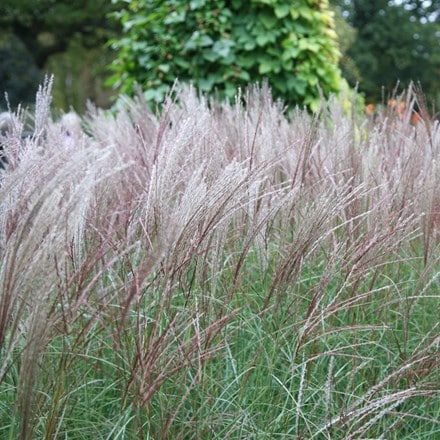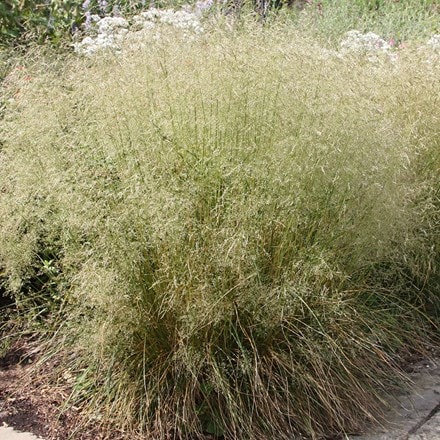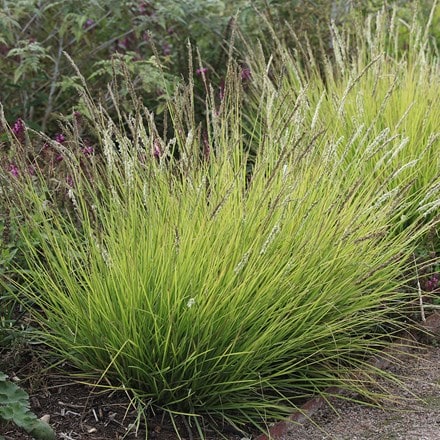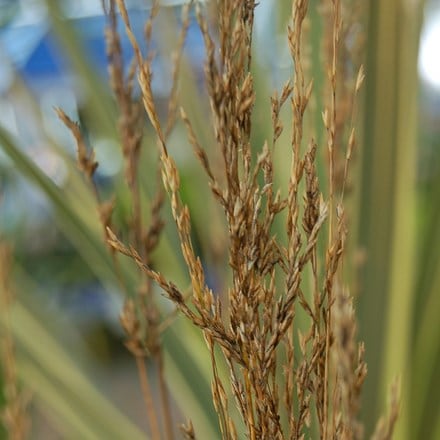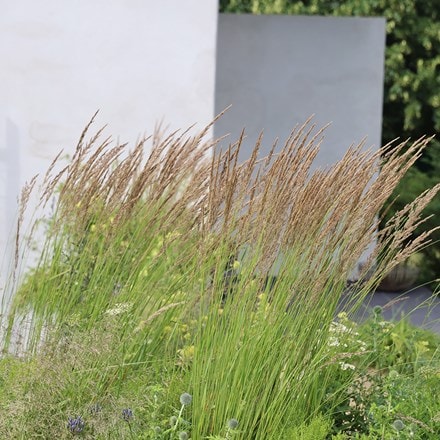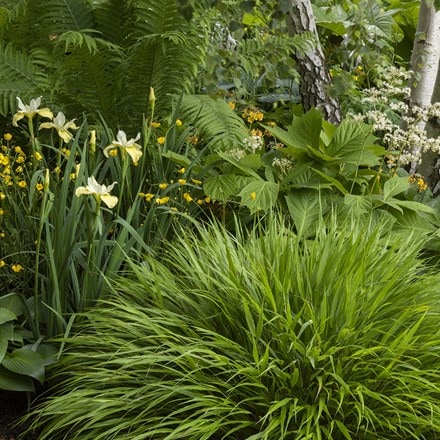
Written by: Resident Garden Designer, Lucy Willcox
Shrubs and grasses are the backbone of any good garden design, and after trees, they're the first thing I think about when approaching a planting plan. By starting with them you'll bring structure and interest to your garden and help it look good throughout the year. Here are my guiding principles on using shrubs and grasses in the garden.
Whether you are editing an existing bed, or starting from scratch, autumn is a great time to update your garden. When I design a space, I always think about my planting plan in layers. Starting with shrubs, then grasses, with perennials and bulbs last. This is because shrubs and grasses are the mainstay of the garden, acting as a foil for my succession of bulbs and perennials. My most important rule is to contrast form with texture. Form meaning the shape of the plant and texture being the leaf size. A domed yew, with its tight form, would contrast well with a spiky grass, such as Hakonechloa macra. This combination would act as the backbone of my design and I would repeat it throughout my border.
Finally, shrubs and grasses are brilliant at creating continuity and flow. Perennials often have specific conditions in which they like to be planted. But shrubs and grasses are mainly happy in both sun and shade. So use similar specimens throughout the garden to create a sense of connection. Here and over the page are some of my favourite shrubs and grasses I use in my planting design.
Clipped shrubs for contrast
I use lots of clipped forms of shrubs in my planting schemes such as yew hedging or Ilex crenata either in ball domes or in low hedges. They go particularly well with grasses which bring in movement, such as Hakonechloa macra. Team this with a Bergenia 'Bressingham White' and you’ll have a winning combination you can use throughout the garden.
Transparent grasses for interest
I particularly like grasses which you can see through, such as Molinia caerulea subsp. arundinacea 'Transparent', Deschampsia cespitosa or Calamagrostis × acutiflora 'Karl Foerster’. Use them at the front of your bed to create a lovely veiled effect to see the perennials behind or to create a sense of privacy for a seating area.
Euphorbias for spring colour
Whilst more of a sub-shrub, I use euphorbias a lot in my planting schemes because they give you a brilliant evergreen base, but also a lime green pop in spring. They're also great en masse! Rosemary, with its lovely steel grey colour, is also a great choice - particularly if you want to bring scent to the garden.
Hakonechloa for the changing seasons
This is a great grass to embrace the changing seasons. One of the earliest grasses to come back up after a winter cutback, they will bring a lovely lime green to your garden. They stay this colour until autumn when they turn a beautiful rustic shade. They’re also very useful for softening a hard path edge. It’s a staple grass in my garden designs.


Lucy Willcox’s border design
Here is an example of one of my own planting plans and how I approach my design in layers. The scheme will provide months of interest; from bold evergreen backbone to gorgeous ornamental grasses and flowering perennials.
First, I think about my shrubs and grasses. Dedicating at least half of my plan to evergreens to provide structure and interest throughout the year. Then, I choose my perennials based on what will create contrast with my shrubs and grasses through form and shape.
Garden Designer Lucy Willcox has been producing Award Winning Gardens since 2007, from contemporary courtyards to large classic gardens. Discover Lucy’s Crocus Border Collection here.

















